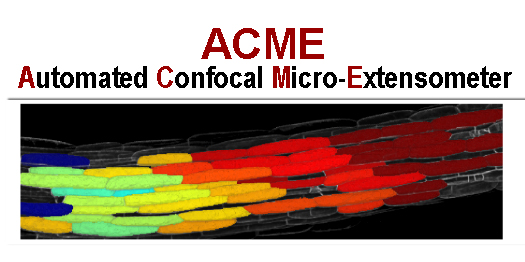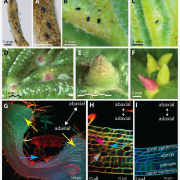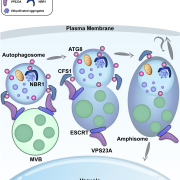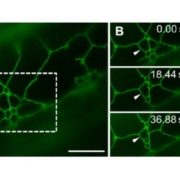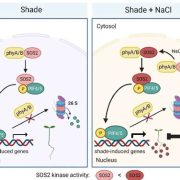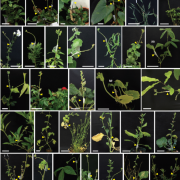Stretching Plants with Cellular Resolution
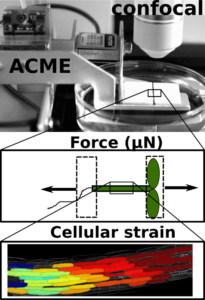
ACME mounted on a confocal microscope. ACME applies or measures force, and confocal images are used to reveal a gradient in cell extension along the hypocotyl.
Robinson et al. develop a method to measure mechanical properties of plant tissue with cellular resolution https://doi.org/10.1105/tpc.17.00753
Background: Plant growth is controlled by the extensibility of the cell wall and the turgor pressure inside. The spatial regulation of these properties controls the final size and shape of the plant. In order to better understand growth, we need to have better ways of measuring these mechanical properties, ideally in the same model systems that have been used to determine the molecular and genetic components of growth. Current methods of measuring cell wall properties and turgor pressure have been very useful but also have many limitations in terms of resolution or the direction in which measurements can be made.
Questions: We had two aims: 1) to develop a method that would enable us to measure the mechanical properties of tissues with cellular resolution and in the direction of growth, and 2) to use the method to determine changes in the mechanical properties of Arabidopsis tissues in response to growth-regulating hormones.
Findings: We developed an Automated Confocal Micro-Extensometer (ACME). ACME is a miniature extensometer that can be attached to a confocal microscope. The user can specify the amount of force or deformation to apply to the sample. We demonstrated ACMEs ability to measure properties in hypocotyls and cotyledons. The confocal images are used to compute how much the individual cells deform. The growth hormone gibberellic acid changed the overall properties of the cell wall. By looking at the cells individually, we saw a gradient in their mechanical properties that matched the growth response.
Next steps: ACME has many applications and scope for future use. For example, it can be used to visualize responses of microtubules or polarly localized proteins to the application of stress. This can help us to understand better the mechanism of mechanical stress sensing that has recently re-emerged as a regulator of plant development. ACME can also identify how the genetic and molecular components of growth relate to the physical changes associated with growth.
Sarah Robinson, Michal Huflejt, Pierre Barbier de Reuille, Siobhan A. Braybrook, Martine Schorderet, Didier Reinhardt, Cris Kuhlemeier. (2017). An automated confocal micro-extensometer enables in vivo quantification of mechanical properties with cellular resolution. https://doi.org/10.1105/tpc.17.00753.


